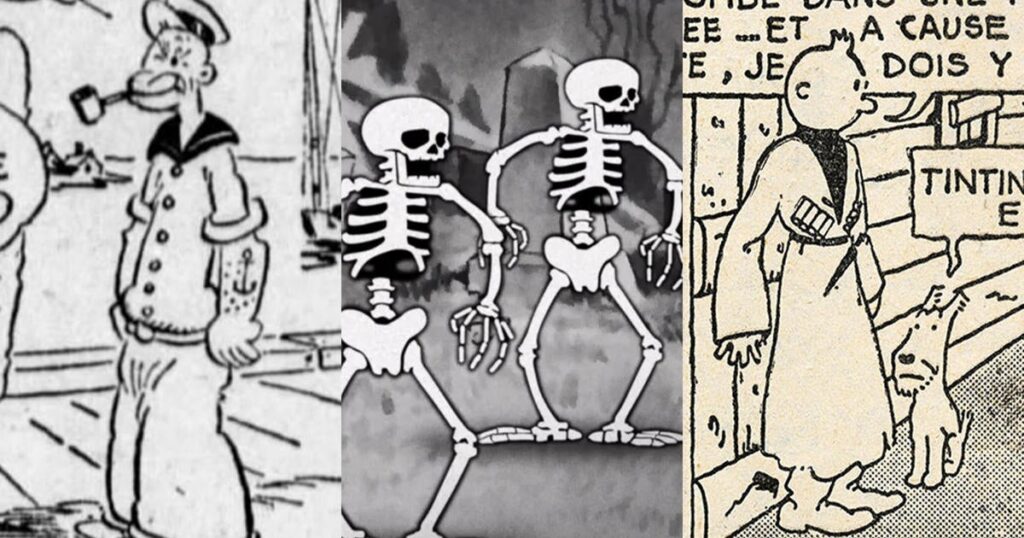[ad_1]
The first of January ushers in a new year, a new month and new entries to the list of works in the public domain. While 2024 saw many popular intellectual properties lose copyright protection — notably the first iteration of Mickey Mouse — 2025 is not without its fair share of noteworthy additions. As of Jan. 1, 2025, several iconic books and characters are now freely available for public use, from Ernest Hemingway’s “A Farewell to Arms” to the original Popeye.
List of popular intellectual property entering the public domain in 2025
Works from 1929 and sound recordings from 1924 are now open to all in the U.S. This means all books, films, songs and art published throughout the Roaring 20s are without copyright protection, making 2025 a significant year for the public domain.
Here are some of the most notable works that are newly free to use.
- “A Farewell to Arms,” by Ernest Hemingway
- “The Sound and the Fury,” by William Faulkner
- “Seven Dials Mystery,” by Agatha Christie
- The first English version of “All Quiet on the Western Front” by Erich Maria Remarque, translated by Arthur Wesley Wheen
- “Rope,” by Patrick Hamilton
- “The Karnival Kid,” Mickey Mouse’s first talking appearance and the debut of his signature white gloves, along with 11 other Mickey shorts
- “The Cocoanuts,” the Marx Brothers’ first feature film, directed by Robert Florey and Joseph Santley
- “The Skeleton Dance,” Disney’s first “Silly Symphony” short, directed by Walt Disney and animated by Ub Iwerks
- “Blackmail,” directed by Alfred Hitchcock, his first sound film
- “Hallelujah,” directed by King Vidor, considered to be one of the first major studio films to feature an all-Black cast
- The character of Popeye by E. C. Segar as he appeared in the “Thimble Theatre” comic strip “Gobs of Work”
- The character of Tintin by Hergé as he appeared in the Le Petit Vingtième magazine comic strip “Les Aventures de Tintin”
- “Singin’ in the Rain,” music by Nacio Herb Brown, lyrics by Arthur Freed
- “An American in Paris,” composed by George Gershwin
- “Tiptoe Through the Tulips,” music by Joseph Burke, lyrics by Alfred Dubin
What does “public domain” mean, exactly?
When a work is in the public domain, it has no copyright protection, meaning anyone can use and build upon it at leisure.
“No fees, no licenses, no tracking down the person who owns it, no permission,” Jennifer Jenkins, director of Duke University’s Center for the Study of the Public Domain, told CBS News’ Lee Cowan in 2024.
How does the public domain work?
Copyright protects an original work for a finite amount of time. When this protection expires, the work enters the public domain. The founding fathers wrote this concept into the U.S. Constitution under the intellectual property clause, intended “to promote the progress of science and useful arts.”
However, the laws governing the public domain can be tricky. For example: Although Mickey Mouse returned to the people in 2024, this classification only applied to his first appearance in 1928’s “Steamboat Willie.” It was not until 1929 that Mickey began wearing white gloves, meaning any public reinterpretation showcasing this characteristic could have been liable for copyright infringement until this year.
When does intellectual property enter the public domain?
In the U.S., the length of copyright protection for a certain property depends on various elements. Generally, for works published or registered before 1978, the term lasts 95 years. For works created after this date, protection typically lasts for the author’s life plus 70 years.
“The public domain doesn’t represent the death of copyright,” said Jenkins. “It’s just the second part of copyright’s life cycle.”
What’s entering the public domain in 2026?
2026 will be another exciting year for the public domain with works from 1930 losing their copyright. Protection will run out for the earliest versions of Betty Boop, Mickey Mouse’s dog Pluto and his friend Clarabelle Cow, teen detective Nancy Drew, M.C. Escher’s “The Bridge,” Agatha Christie’s Miss Marple and more.
Lee Cowan
contributed to this report.
[ad_2]
Source link

